As part of my
continuing investigation into the curious astral realm known as “cinema,” the
official 2015 CRYPTOSCATOLOGY HALLOWEEN HORRORTHON kicked off on October 1st
with my viewing of the recent Blu-ray release of Arnold Laven’s The Monster That Challenged the World
(1957), and culminated in Guillermo del Toro’s latest film, Crimson Peak (2015). In between these two grotesque and arabesque bookends,
you will find directly below an eclectic, semi-random assortment of psychopaths, aliens, ghouls,
and revenants of unforeseen shapes, forms and temperaments. If you would like to retrace my steps through
this peculiar Grand Guignol, feel free to watch the following twenty-two flicks in the
precise order delineated below….
1. The Monster That Challenged the World
(1957). This is, in my humble opinion, one of the
best "giant monster" movies ever made—definitely up there with Them! and the original Godzilla.

2. Son of Frankenstein (1939). According
to Osbie Feel, a character in Thomas Pynchon’s novel Gravity’s
Rainbow, this is one of the five best films ever made. Who am I to disagree with a character in a
Thomas Pynchon novel?

3. The Mad Magician (1954). This
bloodstained thriller stars Vincent Price as a vengeful illusionist with a
penchant for applying a buzzsaw to his many enemies and benefits from the deft
direction of John Brahm, who also directed the brilliant 1940s horror flicks, The Lodger and Hangover Square.

4. Tales of Terror (1962). This Edgar
Allan Poe adaptation stars Vincent Price, Peter Lorre and Basil Rathbone,
features a script by Richard Matheson, and is directed by Roger Corman. Conspiratologists, take note: This was one of many films for which Hollywood
hypnotist Dr. William Jennings Bryan III served as a technical consultant; the
Good Doctor is even given prominent screen credit at the end of the film. According to Jonn Christian and William
Turner’s well-researched book The Assassination of Robert F. Kennedy, only a few years later Dr. Bryan would
hypnotize Sirhan Sirhan into assassinating Robert Kennedy.

5. 12 to the Moon (1960). This one was written by DeWitt Bodeen, who
also scripted such classic Val Lewton films as Cat People, Curse
of the Cat People, and The Seventh Victim. Though not the most enervating flick ever
made, this definitely qualifies as a “UFO Disclosure Film”—i.e., a movie that
subtly unveils the ostensible truth about the alien presence on Earth via
fiction. This flick is filled with alien
hieroglyphics, human and animal abductions, underground lunar
cities, alien telepathy, an Israeli astronaut who's convinced that reports of
extraterrestrials are being manufactured by foreign powers for psychological
warfare purposes, global cooling created by alien technology, a strange
artifact called "The Medea Stone," and the spectacle of Tom
Conway--the most British actor who ever lived--playing a Russian astronaut...
sadly, it all sounds more fascinating than it really is, but nonetheless this
film is not without points of interest for the cryptoscatology enthusiast.
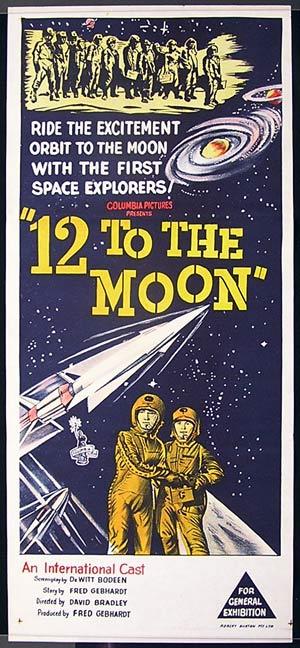
6. Goke, Body Snatcher from Hell (1968). This
is the weirdest, most psychedelic Japanese horror film to which I've ever been
subjected... imagine all the Airport movies you've ever seen,
but add in George Adamski UFOs, airline terrorists, hypnotism, sentient
protoplasm, and a face-vagina that oozes the Apocalypse... excellent,
excellent, excellent... and, Jesus, what a title!... oh, and
needless to say, it's definitely a UFO Disclosure Film... Big Time UFO Disclosure
Film....

7. Hold That Ghost (1941). "Oh... a snooty sort of a
fellow!"

8. Invisible Agent (1942). At the behest of an O.S.S.-like intelligence agency, post-Pearl Harbor, a patriotic American agrees to use his experimental
invisibility technology to infiltrate the Nazis during World War II. For obvious reasons, this film should be of
interest to fans of Chameleo.

9. Behind the Mask (1932). Though technically not a horror film,
nonetheless this was Boris Karloff's first post-Frankenstein role,
his co-star is Edward Van Sloan (Dr. Waldman in Frankenstein)
who's playing the role of a murderous, drug-dealing surgeon, and a key scene in the
film involves a surreptitious dope drop-off that occurs at none other than Montauk
Point in Long Island! (Fans of Preston
Nichols and Peter Moon’s Montauk
books, please take note.)

10. The Guilty Generation (1931). Again, technically this is not a horror
film, though it does play an important role in cinematic horror history.
Reportedly, this is the movie Karloff was working on when director James Whale
spotted him in the Universal commissary and decided he would make the perfect
Monster in Frankenstein...
consequently edging Bela Lugosi out of the production entirely.

11. The Terror of the Tongs (1961). A
powerful secret society known as The Red Dragon—led by a Chinese Christopher
Lee—incites bloody chaos in 1910 Hong Kong, and now it's up to a lone, intrepid
White Man to clean the clocks of these inscrutable, flinty-eyed rapscallions... great
fun!

12. The Devil Bat (1940). “Imbecile!
Bombastic ignoramous!” Just one
of many wonderful lines uttered by Bela Lugosi in this Poverty Row horror
classic filmed just after Lugosi’s Big Comeback in Universal’s Son of Frankenstein. Who on Earth wouldn’t like this? By the way, this film was one of the main inspirations for my novella, "The Fallen Nun," which can be found in my 2014 collection, Spies and Saucers.

13. Scream of Fear (1961). A Hammer horror
film featuring Christopher Lee, a superior entry in what I call the Diabolique
sub-genre... one of the many, many psychological suspense films clearly
inspired by the overwhelming success of Clouzot's 1955 film Diabolique (the
first film to have a "twist" ending, as we think of it today), and
that would include Hitchcock's Vertigo... in fact, the multi-layered,
nesting-Russian-doll twists at the end of Scream of Fear might
be a tad more plausible that the ones in Vertigo....
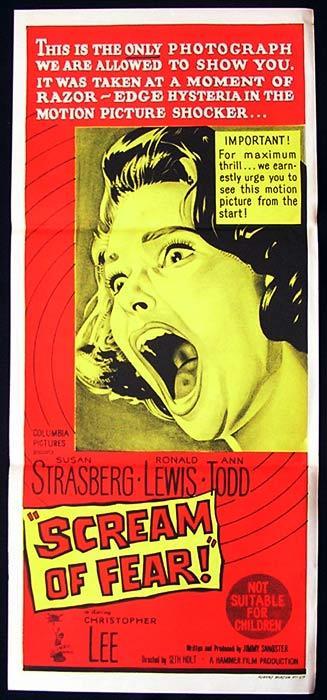

14. The Curse of the Mummy's Tomb (1964). Another
Hammer horror film... the Mummy kicks ass again in turn-of-the-century London!

15. The Living Skeleton (1968). Val
Lewton horror... Japanese-style! The most atmospheric use of rubber bats
and rubber skeletons you're ever likely to see. A spooky lighthouse, a
phantom ship, a mad doctor, bottles of experimental acid, murderous pirates,
and ghost twins. What more could you want? Yes, this is the real
deal all right. How come the best films on this particular list... so
far... have been Japanese?

16. Genocide (1968).
Merely saying that this is a film in which "insects attack the Earth"
would not accurately describe the Ultra High Strangeness of this Japanese
horror epic combining strains of international espionage, nightmarish
psychedelia, psycho-sexual subplots, rampant paranoia, misplaced H-bombs, and
mass murdering mutant insects. Yes, indeed, another winner from our
inscrutable friends in the East. This fever dream was directed by Kazui
Nihonmatsu, who also directed The X from Outer Space the year
before (though The X from Outer Space pales in comparison to
the slipstream-apocalypse on display here). Genocide might
very well rival Goke, Body Snatcher from Hell in terms of pure
unpredictable weirdness.
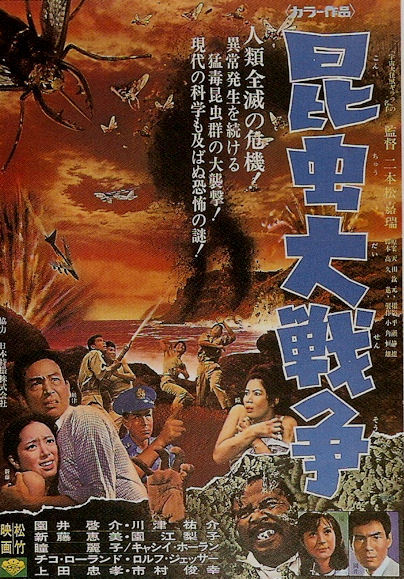
17. Valley of the Dragons (1961). In 1881 Algeria, two gentlemen about to
fight a duel with pistols are abruptly swept up in the tail of a passing comet
and deposited in a prehistoric land filled with dinosaurs and
neanderthals. WTF?!?
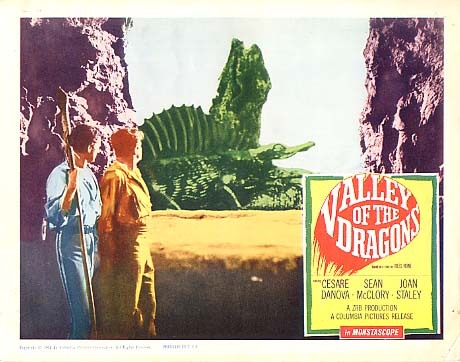
18. A Girl Walks Home Alone at Night (2014). An atmospheric, cinematic tone poem
about a vampire stalking the streets of Bad City, a mythical town in the Middle
East. This film benefits from a meditative, stately pace and noirish
black and white cinematography (two qualities ostensibly verboten in mainstream
Hollywood). Think Carl Dreyer's hallucinatory Vampyr of
the 1930s rather than the 21st century tepid vampires of the
box-office-busting Twilight series.

19. The Innocents (1961). Martin Scorsese considers this to be one of
the top ten scariest films of all time, and it's not difficult to understand
why. One particular scene caused all the hairs on the back of my arms to stand
straight up. Adapted from Henry James’ The Turn of the Screw, the
film was directed by Jack Clayton and written by Truman Capote. The
beautifully sinister cinematography was provided by future Hammer horror
director Freddie Francis (he of The Evil of Frankenstein and Dracula
Has Risen from the Grave fame--or infamy, depending on your point of
view).
20. The Tenth Victim (1965). “Live dangerously, but within the law.” In 1953 the science fiction writer Robert Sheckley published a groundbreaking short story entitled “The Seventh Victim” in the pages of Galaxy Magazine. “The Seventh Victim” is a satirical tale about a near-future society in which contestants volunteer to stalk each other to the death on television for monetary prizes, fame, and the simple thrill of the hunt. Needless to say, Sheckley’s story predates the advent of “reality television” by about four decades. In 1958 Sheckley published a similar story entitled “The Prize of Peril” in the pages of The Magazine of Fantasy & Science Fiction. Both stories are prescient to an extreme degree.
In the early 1960s, actor
Marcello Mastroianni read “The Seventh Victim” and suggested to producer Carlo
Ponti that it be adapted into a feature-length film. Thus was born two
separate expansions of the original story: the 1965 Italian film The
Tenth Victim directed by Elio Petri, and Sheckley’s novel-length version
published by Ballantine Books the following year. Two decades later
Sheckley wrote a pair of sequels, Victim Prime (1987) and Hunter/Victim
(1988), both of which are well worth reading. If you’d like to experience
the source material that inspired a whole slew of popular
"hunter/victim" games like Steve Jackon’s Killer, bestselling
books such as Stephen King’s The Running Man (1982), Paul Michael
Glaser’s 1987 film adaptation of King’s novel, Suzanne Collins’ Hunger Games
trilogy and the blockbuster cinematic adaptations of same, then I urge you to
read Sheckley’s original tales. Afterwards, you should go out of your way
to see Petri’s visually impressive, Pop-Art-adaptation of Sheckley’s prophetic
vision of the 21st century.
It occurred to me while watching
this film that Sheckley’s “Hunter/Victim” game eerily resembles the real life,
post-9/11 phenomenon of gang
stalking—as described in my book, Chameleo—except that
in the real world the victim is never informed that he or she is playing a role
in a televised game for the amusement of others. Leaving aside this
single discrepancy, all details of Sheckley’s darkly absurd scenario plays out
almost precisely like the Global Surveillance Theater in which you’re all
starring at this very moment. Sadly, The Tenth Victim might very
well be a more accurate prediction of the future (i.e., our present) than
George Orwell's 1984, Aldous Huxley's Brave New World, and Ray
Bradbury's Fahrenheit 451 combined.

21. Burn Witch Burn (1962). Beginning with a
magickal invocation by Paul Frees (doing a spot-on Orson Welles impersonation),
Sidney Hayers’ adaptation of Fritz Leiber’s first novel, Conjure Wife, immediately plunges the viewer into a confounding nether-realm
that lies somewhere between rationality and superstition. The protagonist, Norman Taylor (Peter
Wyngarde, who portrayed one of the spirits in The Innocents), is a sociology professor with little patience for
religion or superstitious beliefs of any kind… until he discovers his wife is
an accomplished witch whose protective spells have been the Taylors’ only
defense against a vengeful sorceress, a fellow tenured professor at the small
British university where Norman teaches.
Oh, yes, at this particular university the concept of “academic freedom”
is taken to devilish extremes.
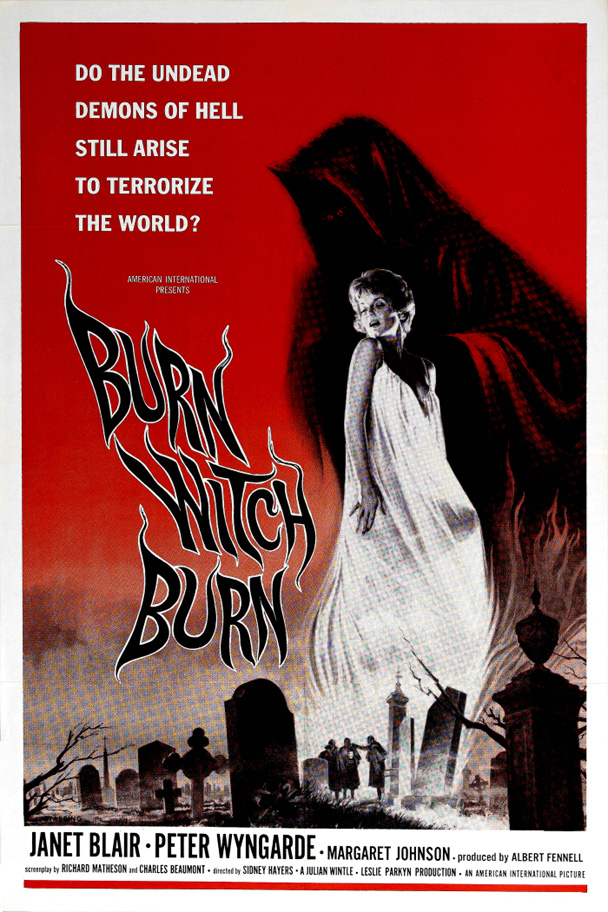
22. Crimson Peak (2015). The best horror film of the year. I urge you to go out and see it before it fades back into The October Country from whence it came....

Having
taught at more than one university during the past fourteen or so years, I can
assure you that Leiber’s vision of a campus crawling with passive-aggressive
profs casting spells and counter-spells on each other to attain a higher
position of (relative) power is the most accurate depiction of university life
ever committed to the printed page. No
metaphors here. Leiber’s “horror” novel
might as well be labeled nonfiction.
Burn Witch Burn
is only one of three films that attempted to translate Leiber’s classic novel to
the silver screen (all of which unwisely abandoned Leiber’s elegant title), but
this is by far the best of them. The
success of the film can be attributed to the faithful screenplay by Richard
Matheson and Charles Beaumont. Clearly,
both writers were fans of Leiber’s novel and went out of their way to keep its
central theme intact. For the uninitiated,
it’s worth noting that Leiber’s Conjure
Wife (1943) and Our Lady of Darkness
(1977) are two of the most accomplished supernatural novels of the twentieth
century. I’ve always felt that Our Lady of Darkness would make a
tremendous film if handled properly. In
fact, it’s long past time for Leiber to be acknowledged outside the narrow
confines of the fantasy/science fiction field.
Perhaps
Penguin Classics is up to the task. This
very month Penguin released new editions of Charles Beaumont’s Perchance to Dream: Selected Stories and Thomas Ligotti’s Songs of a Dead Dreamers and Grimscribe. Penguin is to be commended for this, as the
work of Beaumont and Ligotti are well worth reading; however, I do hope they
don’t stop there. A collection of Leiber’s
finest tales is long overdue. Any tome
that collected such dark jewels as “Smoke Ghost,” “The Girl with the Hungry
Eyes,” “Four Ghosts in Hamlet,” “The Man Who Never Grew Young,” “Coming
Attraction,” “Belsen Express,” “The Man Who Made Friends with Electricity,” “Richmond,
Late September, 1849,” “Dark Wings,” “A Bit of the Dark World,” “The Winter
Flies,” “Schizo Jimmie,” “237 Talking Statues, Etc.” and “You’re All Alone”
would be a quaint and curious volume of almost-forgotten lore worthy of
inclusion on any bibliophile’s bookshelf.
(If anyone at Penguin Classics is reading this, they should get the ball
rolling on that project right away.) In
the meantime, be sure to check out a volume entitled Dark Ladies, an inexpensive Tor Books omnibus collecting both Conjure Wife and Our Lady of Darkness, then watch the recent Kino Lorber Blu-ray
release of Burn Witch Burn, which includes an audio commentary by Richard Matheson.

22. Crimson Peak (2015). The best horror film of the year. I urge you to go out and see it before it fades back into The October Country from whence it came....
